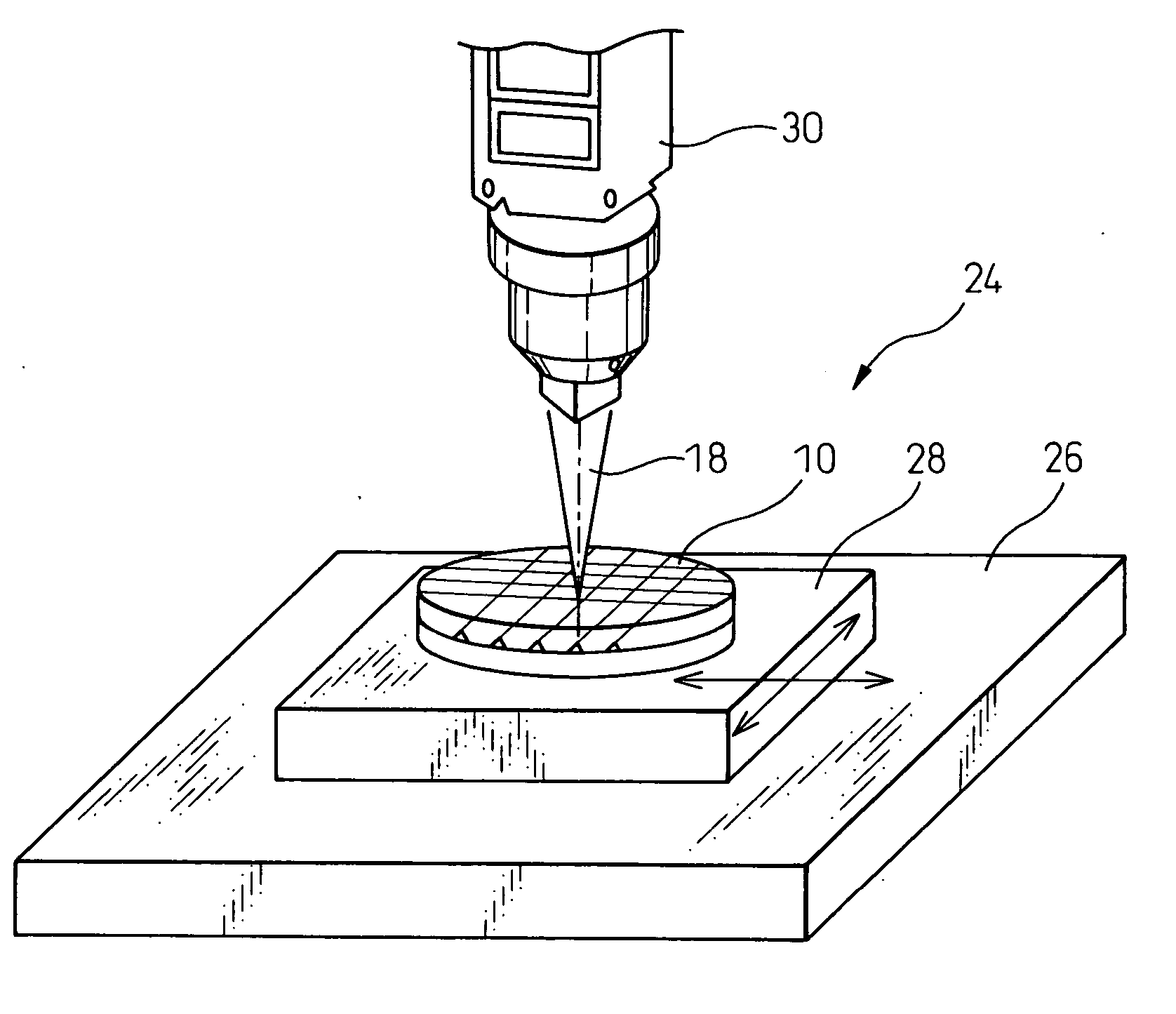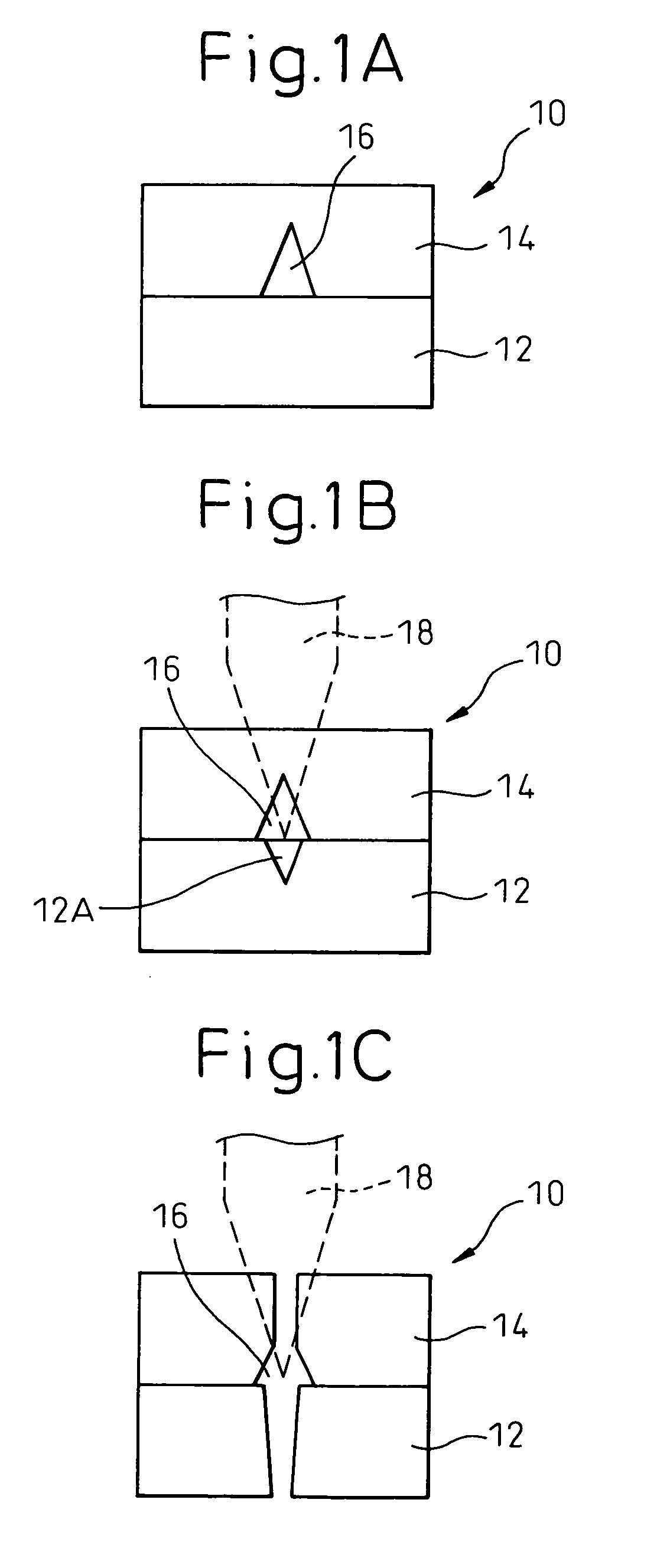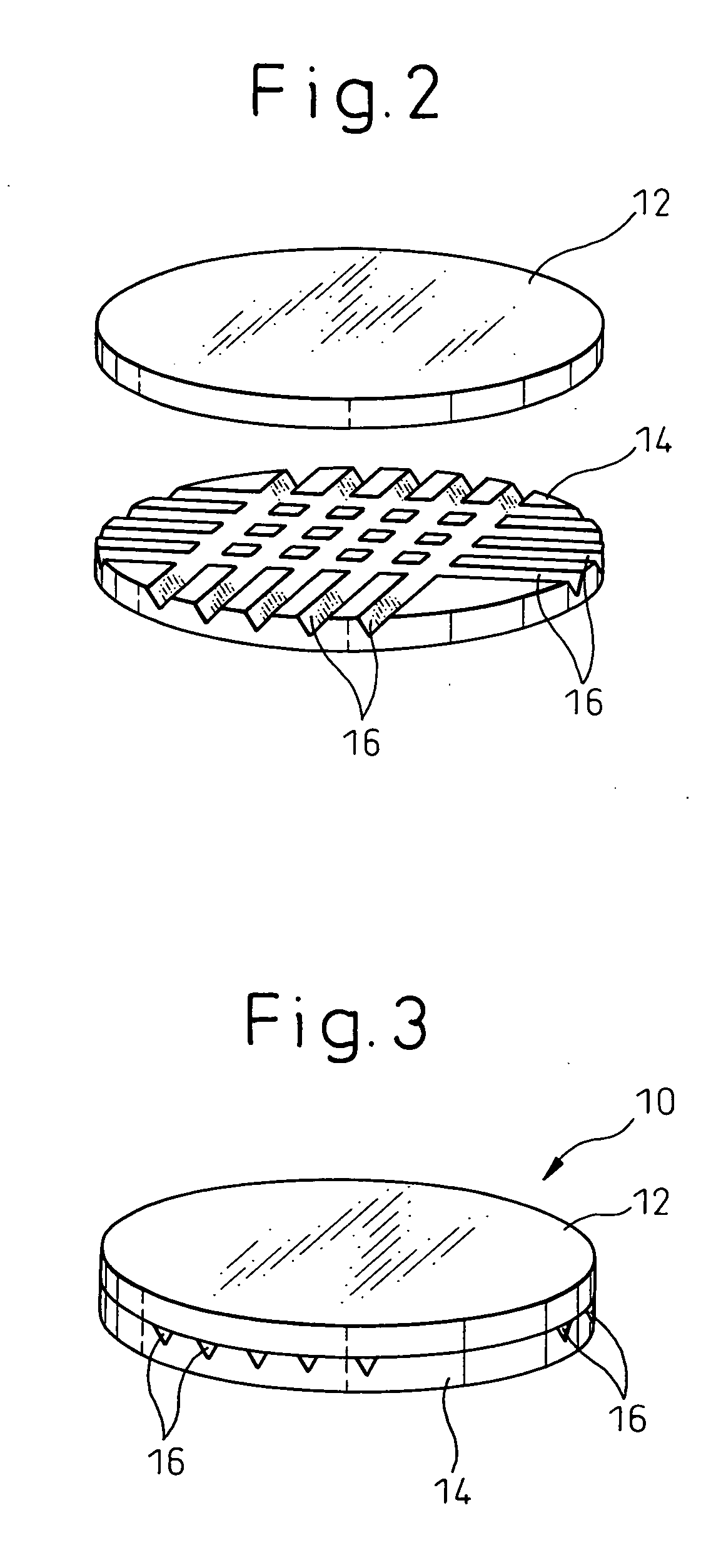Method of cutting laminate with laser and laminate
a laser and laminate technology, applied in the field of cutting laminates and laminates, can solve the problems of affecting the quality of laminates, so as to achieve the effect of reducing size and cost, and efficient production of high-quality devices
- Summary
- Abstract
- Description
- Claims
- Application Information
AI Technical Summary
Benefits of technology
Problems solved by technology
Method used
Image
Examples
Embodiment Construction
[0026] The preferred embodiments of the present invention are described below with reference to the drawings. FIGS. 1A to 1C are diagrams showing a method of cutting a laminate according to the present invention.
[0027] In FIG. 1A, a laminate 10 comprising a first substrate 12 and a second substrate 14 is prepared. The second substrate 14 has a groove 16. An explanation is made below with reference to an example in which a plurality of MEMS devices are fabricated, but the present invention is not limited to this example. The laminate 10 has circuits and fine mechanisms formed therein corresponding to a plurality of MEMS devices, and cut into individual MEMS devices separated from each other. The groove 16 is formed along a cutting line for separating the laminate into MEMS devices.
[0028] The first substrate 12 is formed of a semiconductor, i.e. constitutes a silicon wafer formed with circuits and fine mechanisms. The second substrate 14 is formed of pyrex glass, and the groove 16 i...
PUM
| Property | Measurement | Unit |
|---|---|---|
| Shape | aaaaa | aaaaa |
Abstract
Description
Claims
Application Information
 Login to View More
Login to View More - R&D
- Intellectual Property
- Life Sciences
- Materials
- Tech Scout
- Unparalleled Data Quality
- Higher Quality Content
- 60% Fewer Hallucinations
Browse by: Latest US Patents, China's latest patents, Technical Efficacy Thesaurus, Application Domain, Technology Topic, Popular Technical Reports.
© 2025 PatSnap. All rights reserved.Legal|Privacy policy|Modern Slavery Act Transparency Statement|Sitemap|About US| Contact US: help@patsnap.com



